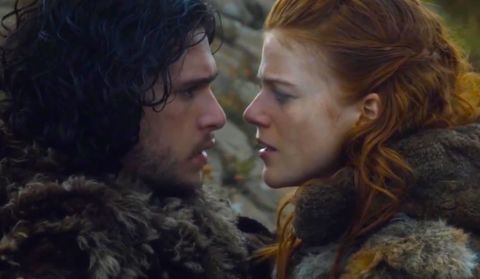A, B, C: How to determine your hair type and choose care
Hair care at first glance is easier than skin care: hair should be washed with a comfortable period, do not forget about massage and scalp, if you wish, use masks and conditioners. Many admit that they do not see the difference between shampoos, and the appearance and condition of the curls can be improved by building care for them according to the type of hair. We tell how to determine your type and choose the appropriate means.

How to determine the type of hair
Hair, like skin, may actually have many individual characteristics: straight hair will not necessarily be thin, and curly - not necessarily thick. Nevertheless, the universal parameters, which should be oriented, are easily determined: density, texture and porosity can be set by conducting several simple experiments at home. In the end, the hair can be attributed to one of the four types within which there are subtypes - and each of them requires special care.
A popular indicator of hair type is their oiliness, which actually refers to the characteristics of the scalp. And with oily scalp hair can be dry or dehydrated: start with proper care of the scalp, and further beauty routine should be regulated, paying attention to the behavior of the main length. To understand how thick your hair is, separate one strand and look at the roots: it is more convenient to do this operation with the strand at the parting itself. If the hair per square centimeter is not too much, so that the skin is visible - the density of the hair is low or medium, and if the gaps are barely noticeable, then the hair is thick. For very thick hair, the normal loss will be higher - just because they change more often, and the "hair fall" is more noticeable. Also on different parts of the scalp hair thickness may vary.
In order to determine the texture and porosity, you should wash your hair using ordinary shampoo and conditioner, and then let it dry without using a hair dryer: during the styling process, the hair structure may change slightly, which will affect the purity of the experiment. To determine the thickness of the hair, the easiest way to compare it with a regular sewing thread is to place one hair next to it on a piece of white paper. There will be a noticeable difference in diameter between the thin hair and the thread. Thick hair has a noticeable stiffness, holds its shape better and can be noticeably larger in diameter than the thread. To choose the right products, it is also important to know what the porosity of your hair is. Determine it by dropping one dry hair into a volume bowl or bowl: hair with low porosity will remain on the surface of the water, and the higher the porosity, the faster it will go to the bottom.
To understand how elastic your hair is, take one hair by both ends and stretch it in different directions: brittle hair is easily torn just by the force of the impact, and the elastic ones will stretch to the last. To make sure, conduct this experiment on both wet and dry hair - any hair becomes more fragile due to moisture. Another feature that you can navigate when choosing the right hairbrush, styling products and methods of care - this is a twisting pattern. Look at the naturally dried strand: straight hair of the first type does not curl and does not change shape, the second type is obedient S-shaped waves, the third is clearly curly hard hair, and the fourth is zigzag "springs" found in people of African descent.
available brands: you can remove fluffiness with the help of almost any spray or smoothing cream; dry shampoo or a special foam will help to add volume.
Holders of straight hair are much more comfortable to use and scrubs for the scalp. Exfoliating particles are easier to distribute over the skin and wash out of the hair, and using this tool is enough two or three times a month. The rest should focus on lightweight care: suitable sulfate-free shampoos, almost any conditioner. Blow-drying and hot-styling direct hair transfer calmly - however, it is always better to make a choice in favor of cold air and thermal protection. If your category is 1A, most likely your hair will not keep its curly styling or carefully curled curls for a long time, but various weaves and neat tails are available to you without restrictions. Straight hair love and trendy texturizing sprays, especially type 1B.
to be registered on the shelf, and prevention of dryness should be arranged with the help of masks and conditioners. Not too thick wavy hair type 2A can be styled using a hair dryer, using the means to form a curl, but it is better to postpone a strong fixation - such products can “weight” the styling.
However, straightening them is also pretty easy. More dense and noticeably curly hair type 2B is better to dry naturally, not to get involved in careful combing. They are suitable care with oils: it can be used as a mask before washing the head, or after - as a means for disciplining, choosing a suitable jar for this purpose. But hair type 2C is almost curly and often dry. They will not require dancing with a tambourine, but it will not be superfluous to introduce a conditioner for deep moisturizing.
the path to dryness, secondly, most likely it will be just useless. In an average Russian hairdressing salon, it is better to immediately explain why your hair should not be wetted before cutting: the correct form can be determined by working only with dry curls, and techniques designed for straight and wavy hair simply will not work correctly.
To make your hair feel good, moisturize it with a special conditioner, and alternate shampoo with coving. Curly hair type 3A after washing and a moisturizing session is best left alone, for denser and fluffy 3B and 3C, you can get an indelible conditioner that will help the curls to take the desired shape and lie beautifully. Very dense and porous hair is best cleaned with a conditioner for coving, resorting to shampoo as rarely as possible. It is better to forget about the comb: the necessary smoothness will help to achieve manipulation with air conditioners, and it is better to shape the hair with your fingers.
home conditions. Small curls of type 4A will require the same set as any curls: soft shampoo, moisturizing conditioner, indelible means. To give curls a beautiful shape, you can dry them with a hair dryer with a diffuser - again using only cold air. Rigid type 4B zigzag curls can be further disciplined with oil or spray, light jelly and other final products intended for curls. Virtually no modifications are thick and thick curls like 4C: stick around in different directions - their natural position. Such hair should also be carefully and regularly moisturized, and the hairstyle should be given a neat shape, again, after consulting with a master who is not afraid to take on natural curls.
PHOTO: Paul Mitchell, Authentica love (1, 2), Lepota, Maroccanoil, Look Fantastic, Pricena, Cosmetics Gallery, sunnysashka - stock.adobe.com




